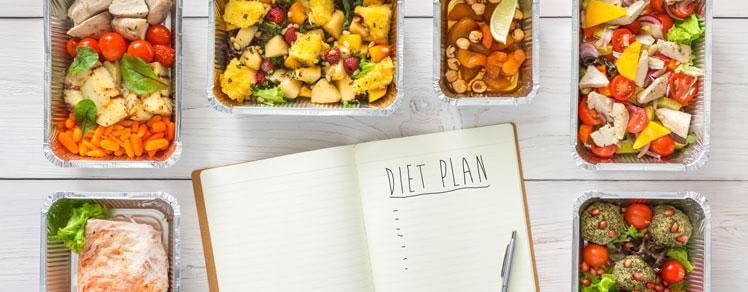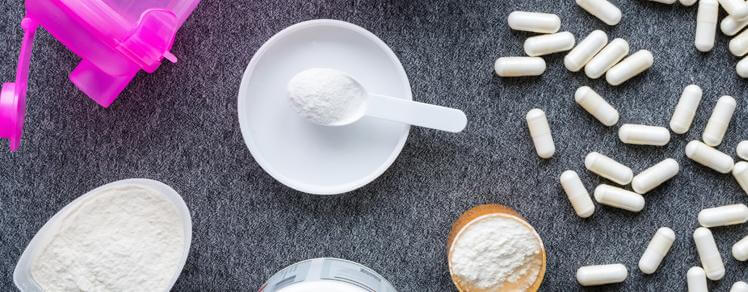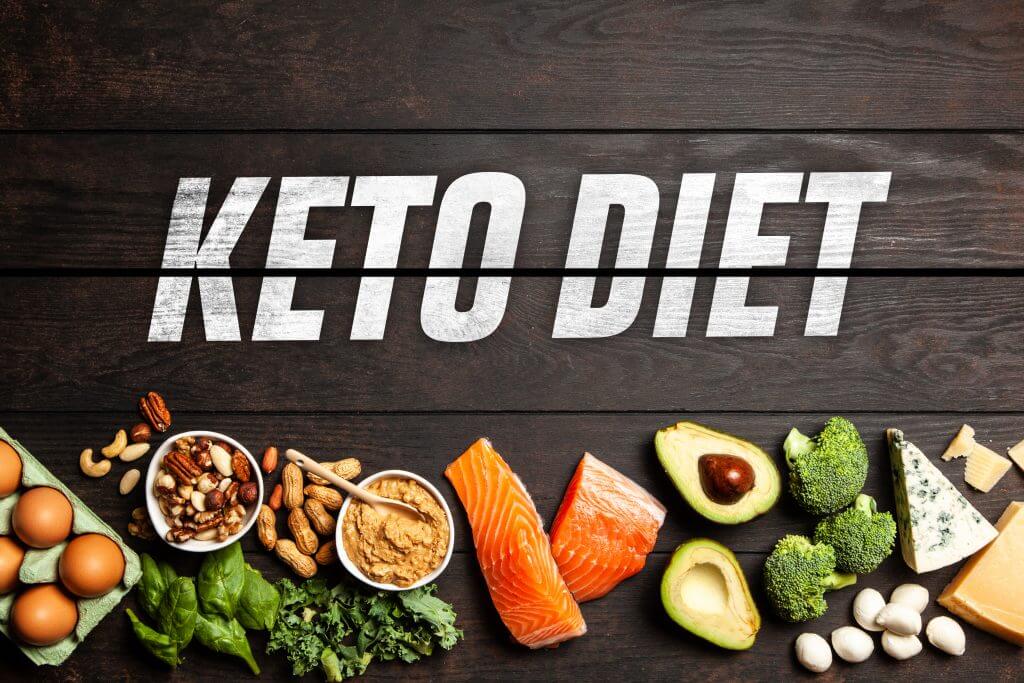How To Create A Diet Plan For Beginners
Need help creating a diet plan? I’ve put together a comprehensive guide to help beginners build out their optimal diet plan complete with a grocery list and example diet!
Most of us know now that in order to get into lean shape, an effective diet plan is key. We also know that to lose weight we need to burn more calories than we consume. But that’s pretty much where most folks draw the line for self-education. Some people are lucky to get decent results with sub-optimal diets, but most get no results in that process. This article is designed to help you avoid many of those common mistakes and get the best results for the body you want year-round!
Forewarning: there is a lot of information in this article but I still recommend everyone to take some time to study and learn additional information for questions you might have.
DIET
You are hungry and I know it! But before we get into the actual diet plan we need to cover a few things. The building blocks of creating a successful diet plan for fat loss are just as important as the diet itself. When you start to understand these, you will be able to tell which diet plans will work well for you, and why other ones which look great on the surface might not be good for you personally. You must remember that there is no ONE diet that is the best for everyone! After reading these common mistakes you should be better able to adjust the diet plan for yourself.
COMMON MISTAKES
Let’s take a look at some common mistakes that can hinder your fat loss results. Keep in mind that some are the result of poor information but others are just from negligence. We can’t forget just how easy it is to make some of these mistakes without realizing it; I know I’ve made some!
- NOT EATING ENOUGH
Not consuming enough food or the RIGHT FOODS will hinder your fat loss journey in many ways. The fewer calories you consume, the more efficient your metabolism becomes. Now for most, that sounds like a good thing right? In this case, it’s not.
A more efficient metabolism means that your body burns fewer calories, and less total fat as a result. That means if your calorie levels are too low, your muscle tissue has a better chance of being burned for energy. On top of that, a decrease in calories can also have an impact on your performance in the gym.
- EATING TOO MUCH
Now on the other hand eating too many calories or too much of the wrong foods can be just as bad. Eating more will cause your body to burn more total calories and will make your metabolism more inefficient. This is a tool that must be used intelligently; it doesn’t mean you can just got out and eat as much as you want!
- NOT DRINKING ENOUGH WATER
Most people understand the importance of drinking enough water… yet those same people are likely guilty of still not drinking enough water! As silly as it sounds, you actually need to put effort into drinking water. Too many of us rely on the feeling of thirst to tell us we need to hydrate. General rule of thumb, your urine should stay clear or very light yellow. The darker it is, the stronger the sign of dehydration.
These are just a handful of MANY common mistakes made day after day. If you start to tackle these one by one, you’ll already be well on your way to better eating habits.
THE TRIFORCE OF FOODS
Before we go to the supermarket and stock up on the goodies lets try and understand WHAT we’re getting and WHY we’re getting it.
MACRONUTRIENTS… WHAT THE HECK ARE THEY!?
Well for those of us who are a little out of the box when it comes to nutrition this word might as well be some foreign space language. Macronutrients or “macros” are the nutrients that provide calories (energy). These nutrients are what your body requires for growth, metabolism, and other important functions that your body performs. “Macro” means large, so the macronutrients are what you need in LARGE amounts. The 3 Macronutrients are: Carbohydrates, Proteins, and Fats – these 3 in combination will comprise most of your diet plan. Let’s look at each one individually
CARBOHYDRATES:
Oh carbs, this bad boy gets such a negative moan when spoken about. Too many folks see carbs as the devil, like eating them will cause you to gain an extra chin and slowly get “cankle” syndrome. When carbs are integrated properly into ones diet it becomes as important as putting gas into a car. Because in retrospect that is EXACTLY what you are doing! The human body breaks down carbs into glucose molecules though digestion. Once broken down, carbs will turn into ENERGY, literally FUELING your mind and body. Now I can bore the hair off your head (sorry if you are already bald) with naming all the scientific mumbo jumbo that goes into Carbs, but I don’t want to flood your mind into submission! I want you to enjoy what you learn and incorporate that into your lives! Lets just get down to business and reach the bottom line right!? You want to consume what is right for your body. Do your best to stay away from the highly processed carbs. Why you ask? Well my little baby birds, allow me to feed you some morsels of knowledge. The more a food is processed beyond its original state the faster it is to digest. I already know the question that comes to mind is “what’s wrong with that?” Well, the faster you can digest something the sooner your hunger will kick in again. Leading most people to OVEREAT throughout the day. Stick to natural, whole foods and you will feel fuller for longer periods of time and give control back to your body.
PROTEINS:
Think of water, it’s the most abundant molecule in your body right? Well protein is the 2nd! The importance of protein in your system cannot be understated. It is required to maintain what muscle you already have and GROW what new tissue you want. Not having enough protein in your diet is not only damaging to your progress, but NOT having enough will put stress on your body forcing it to receive the necessary protein-related nutrients from your own muscles, vital organs, etc.
Summary: PROTEINS = important!
FATS:
So just to be clear, FAT (lipids) also provide energy for the body. They have many vital roles such as insulating body organs, keeping body temperature at a level state and promoting healthy cell function. When people see or hear the word FAT they cringe and point the finger at it like it’s the black sheep of the nutritional family! Even though it’s nearly impossible to cut fats completely out of your diet, it’s also UNSAFE! Certain fatty acids are ESSENTIAL nutrients folks, meaning that you can’t produce them in your body from different compounds and they must be consumed through food or supplement sources.
So lets make it ourselves!
Like I said at the beginning of the article. There is no ONE PERFECT diet plan for everyone. What works for some may not work for others. This is exactly why I am giving you the information you need in order to help make a diet plan set around YOU. Keep in mind that you can spend hours upon hours in the gym, day after day, but without the proper diet plan all that work is basically null and void! We as a society have unfortunately been brainwashed to believe that healthy foods are boring and bland. BLASPHEMY I SAY!!! There are more and more blogs, websites, social media accounts, etc. that are constantly posting new healthy and DELICIOUS ways to get a nutritious diet! I always tell folks that whatever unhealthy food you enjoy whether it be pizza, fried chicken, hamburgers, there is always a healthy alternative, just takes time and effort to make it!
You’re on the MAN Sports website because you have a certain goal in mind, and it’s usually a goal that will require some time to reach. But when it comes to my methods I am a firm believer in the 24-hour goal! A big reason why people fail to reach their goals is because they focus too much on the time that it will take and that leads to discouragement during the process. The 24-hour goal is exactly what it sounds like. Your goal for the day is to eat all your meals and get a workout in. If you get both of them completed than BOOM you’ve reached your daily goal! Now keep in mind this can go for a ton of tasks, it doesn’t have to be those 2 specifically! But, if you train your body and mind to just focus on the day-to-day goals, than you won’t be so overwhelmed about the long term goal down the road.
Calculating the BMR
BMR stands for Basal Metabolic Rate and it is the amount of calories your body needs in order to function in a state of rest. So how do we calculate it?
You can easily search online using the keywords “BMR calculator” and find one that will give you you’re numbers. You can also easily find BMR formulas that give you an estimate of what they will be for each given activity factor. Apps such as Nutritionist + and MyFitPal also give you quick ways to see your overall numbers. However, I’m a big believer that you should always have them on hand just incase you can’t get online to check them. So here ya go!
Step 1. Estimate Your BMR:
Use the following formula:
370 + (21.6 X lean body mass in kg) or 370 + (9.8 X lean body mass in lbs)
If you weigh 200 pounds, and your approximate body fat is 10%, then you would have a lean mass of 180 lbs (200 – 10%). This gives us 2134 calories as our “BMR”.
Step 2. Activity Factor:
Next, multiply the number from step 1 by the following:
Sedentary (desk job, with little or no exercise) = BMR X 1.2
Lightly Active (light exercise/sports 1-3 days/week) = BMR X 1.375
Moderately Active (moderate exercise/sports 6-7 days/week) = BMR X 1.55
Very Active (intensive exercise/sports 6-7days/week) = BMR X 1.725
Extremely Active (intensive daily exercise/sports & physical job or twice per day) = BMR X 1.9
So with the example above, and with exercise 6 times per week, we get 2134 X 1.725 = 3681
Step 3. Subtract 15%:
3681 – 15% = 3129 (3681 X .15 = 552 & 3681 – 552 = 3129) YOU NOW HAVE YOUR STARTING CALORIE INTAKE!!!
BUT WHAT ABOUT THE MACRONUTRIENTS!?!?
I am getting to them!!! Now keep in mind that these ratios are ONLY a guideline and by no means set in stone (an app can give you much more accurate numbers.) The timing of your nutrients is much more important than overall ratios. With that being said you should be trying to get 30-50% of your calories from carbs, with most of them eaten 0-6 hours post workout. 30-40% of your calories should come mostly from lean sources of protein. 20-30% of your calories are coming from good fats. Not too difficult to understand right? Rocket science this is NOT people!
MAKE THE HIT LIST AND BECOME A GROCERY ASSASSIN
I will not name SPECIFIC foods for your diet plan. Instead this template is going to be based on YOU choosing the food and filling it in the slot you want. There is no real reason for me to name a certain foods anyways, besides my own personal preference. These will allow you the flexibility to be creative with what you want to eat!
This diet plan will be based on high & low carb days, which are based on workout days. Workout days will require more carbohydrates, while non-workout days will require less.
You can also use the High Carb days for Leg and Back days and Low Carb for all other days if you wish.
- Proteins:
Egg whites
Chicken Breast Grilled
Chicken thighs
Turkey Breast
Beef (lean, sirloin, flank steak, ground beef, bison beef)
Salmon o Tilapia
Tuna
Scallops
Cottage Cheese
Shrimp
- Carbs:
Brown Rice
Sweet Potatoes
Oats, steel cut
Quinoa
Whole Wheat bread o Ezekiel Bread
Whole Wheat bagel
Apples and Oranges
Pinto Beans
Basically most fruits and veggies!
- Fats
Flax seed oil
Olive oil
Avocado
Almonds unsalted
Walnuts
Peanuts
Peanut butter 100% natural
Fish oil Softgels
- FRUITS AND VEGETABLES:
Fruits:
Grapefruits
Watermelon
Strawberries
Blackberries
Currants
Blueberries
Rhubarb
Oranges
Cantaloupe
Vegetables:
All fibrous, low-calorie vegetables
Carrots
Celery
Lettuce
Other leafy greens
Cucumbers
Turnips
Tomatoes
Radishes
Broccoli
Cauliflower
These lists are just to give you a general idea. Other fruits & vegetables that are low-calorie density can also be eaten frequently. Choices that contain higher amounts of calories such as bananas or avocados need to be counted as part of the daily calories.
HOW IT WILL ALL LOOK TOGETHER (SAMPLE DIET PLAN)
Do your best to divide your protein intake up roughly between your meals. About 2/3 – 3/4 of your carbs should be eaten post-workout and up to 4-6 hours after your workout.
BREAKFAST – About 15% Of Total Caloric Intake
- 1/3 starchy carbohydrates (oatmeal, whole wheat bread ,etc.)
- 2/3 of protein (eggs, milk, lean meat)
- Small portion (1 spoonful) of good fats (fish oil, olive oil, nuts, etc.)
- Your choice of fruits & or vegetables from the list
- Water or Green Tea
- ALL OTHER PRE WORKOUT MEALS & AFTER 4-6 HOURS AFTER WORKOUT:
- 1/3 of starchy vegetables and/or fruits (greens, sweet potato, salad, etc.)
- 2/3 of lean protein
- Small Portion of good fats
- Any of the listed fruits and vegetables • Water or Green Tea to drink
PRE-WORKOUT NUTRITION (optional, But IDEAL)
- 30-40 grams of fast absorbing carbohydrates Use MAN Sports ISO-Carb supplement for best results
- 5-15 grams of MAN Sports ISO-Protein or ISO-AMINO BCAA powder
POST-WORKOUT NUTRITION (Get ASAP)
- 20-40 grams of MAN Sports ISO-Protein Whey Protein Isolate
- 40-80 grams of fast absorbing MAN Sports ISO-Carb
- 5-10 grams of MAN Sports ISO-AMINO BCAA’s
- 5 grams of Man Sports Glutamine
1-2 HOURS AFTER WORKOUT
- 1/2 of Starchy Carbs (Whole grains, pasta, whole grain bread, oats, baked potatoes, etc.)
- 1/2 of lean protein (Egg whites, tuna, other fish, lean red meat, skim milk, etc.)
- Minimal fats
- Any fruits and vegetables from the list • Water or green tea to drink
3-4 HOURS AFTER WORKOUT
- 1/2 of starchy carbs ( Whole grains, pasta, whole grain bread, oats, baked potatoes, etc.)
- 1/2 lean protein (Egg whites, tuna, other fish, lean red meat, skim milk, etc.)
- Small serving of extra good fat
- Any fruits & vegetables from the list • Water or green tea to drink
4-6 HOURS AFTER WORKOUT
- 1/3 of starchy carbs (Whole grains, pasta, whole grain bread, oats, baked potatoes, etc.)
- 2/3 lean protein (Egg whites, tuna, other fish, lean red meat, skim milk, etc.)
- Small serving of extra good fat
PRE-BED MEAL
- 1 cup of skim milk
- 1/2 scoop of MAN Sports ISO-Protein Whey Protein Isolate
- 1/2 scoop of MAN Sports Clean Protein 4 Protein Blend OR 2 cups of skim milk = 1/2 scoop of protein
And there you have it! I know that is a lot of information for you to have read but I hope it has helped in any way possible. When it comes to changing our lives with incorporating health and fitness, I’ve always found the diet to be the biggest headache and frustration. The goal of this article is to help make it less confusing in hopes that you can better understand not only what to eat, but the ‘why’ and ‘how’ behind it! I’m MAN Sports athlete Sean Sarantos and I will be seeing you soon with more helpful info and tips!

Sean Sarantos, Certified Fitness Master Trainer/Dog Lover
IG: @sean_sarantos
Categories
Featured Articles
Follow Us
Newsletter
Join the MAN Sports insiders to access the latest content, newest product releases, exclusive deals, giveaways, and more.





